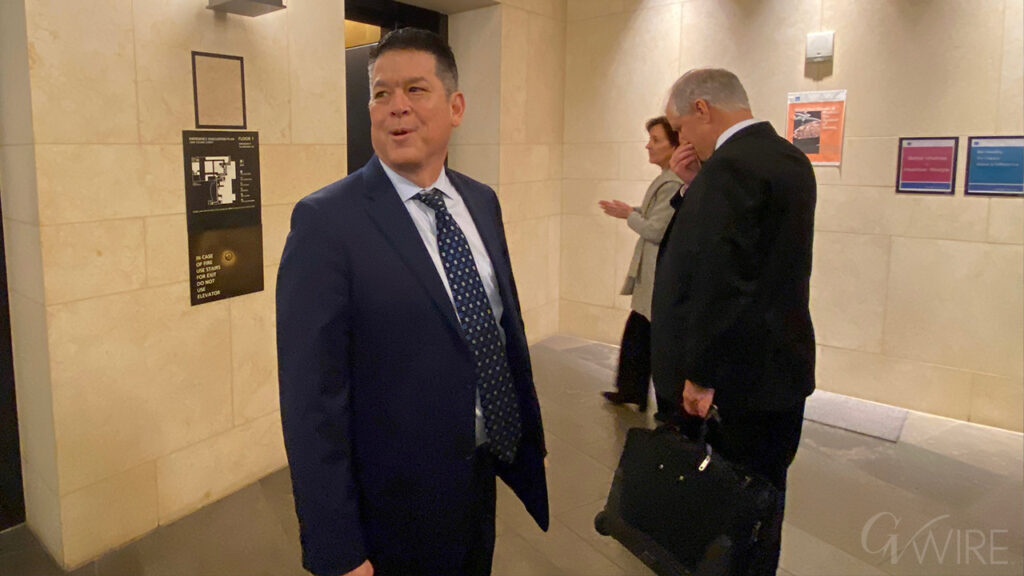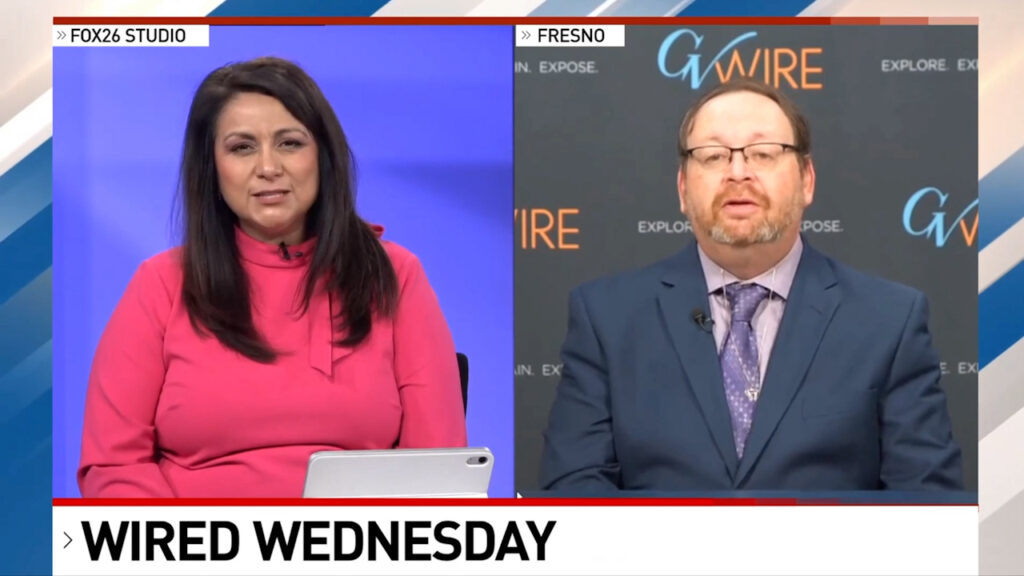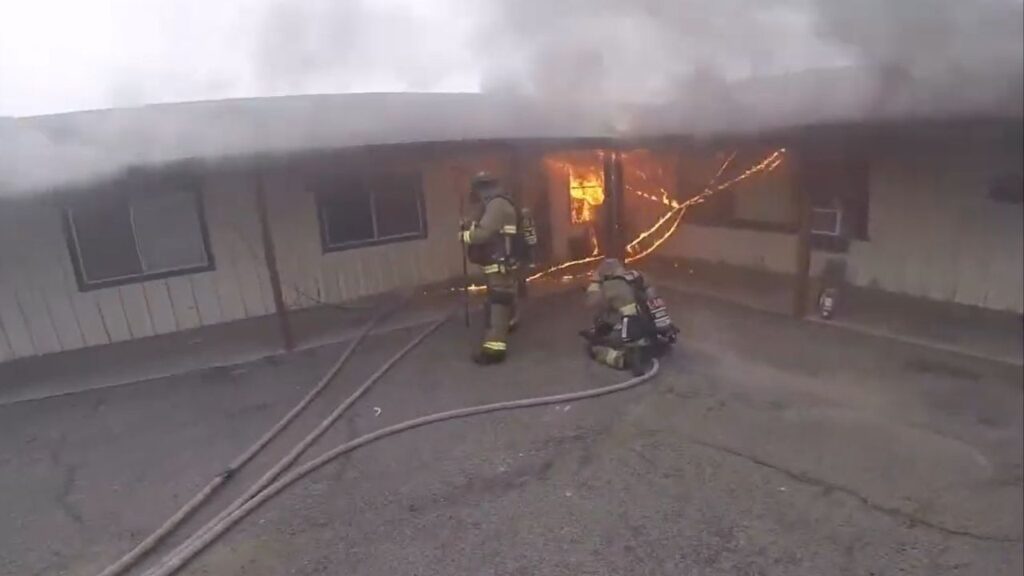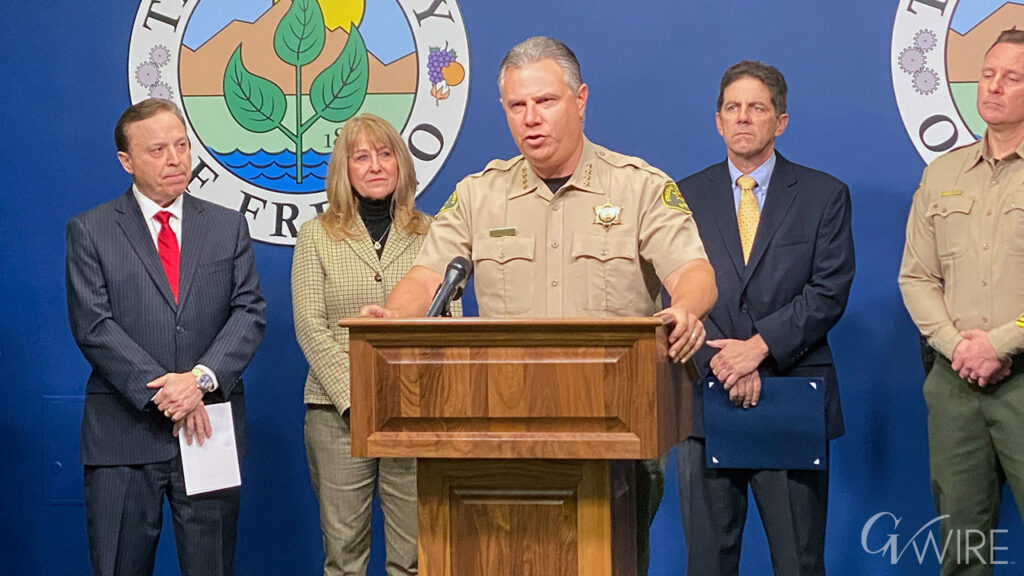A stegosaurus skeleton is displayed at Sotheby's New York in New York, Wednesday, July 10, 2024. (AP/Pamela Smith)
Share
|
Getting your Trinity Audio player ready...
|
Over the past 500 million years, our planet has gone from hot to cold to hot again. The oceans have risen and fallen. Ice caps have melted and reformed. It is a story with several acts, and sunlight and carbon dioxide are the main players.
The better scientists can reconstruct the climate’s story, the better they might predict how it will play out in the future, now that there’s a major new character on the scene: humans.
In a study published Thursday, a team of researchers presents a sweeping new account of this history, one that combines geological evidence with predictions from computer models of the global climate.
Their picture of Earth’s deep past is a much toastier one than other studies have painted, particularly during periods when carbon dioxide levels were high.
With all the carbon dioxide that humans are now pumping into the atmosphere by burning fossil fuels, the new findings suggest that temperatures could rise more than expected over the coming millennia, said the study’s lead author, Emily J. Judd, a climate research analyst at the National Institute of Water and Atmospheric Research in New Zealand.
“We’re not saying it’s going to heat up immediately,” Judd said. But “in the long term, the planet will likely get warmer than we previously thought.”
In the meantime, she said, humans are adding carbon dioxide to the skies so quickly, nearly 40 billion tons per year, that it will have much more catastrophic effects than the gradual, geologic shifts of Earth’s past.
“When carbon dioxide and temperatures change rapidly, that’s when everything on the planet just can’t keep pace,” Judd said. “The environment is changing at a rate that’s too fast for organisms to keep up with. And that’s when we experience mass extinctions.”
Other researchers who weren’t involved in the study, which was published in the journal Science, praised its novel methods. “It’s very innovative, and probably the way to go in the future,” said Christopher Scotese, a geologist at Northwestern University.
Even so, Scotese questioned whether the researchers’ hotter account of prehistoric Earth squared with other evidence about what the planet was like back then. The study suggests the world was intolerably hot at certain times when life seemed to be flourishing, he said. And it implies the planet was too warm for polar ice sheets to grow at times when such ice apparently existed.
The past 500 million years were an eventful time for Earth. Complex life arose. The continents broke apart. Geological processes heaved carbon dioxide into the atmosphere, then drew it down again, causing the climate to lurch between what scientists call greenhouse conditions and icehouse conditions.
During this period, according to Judd and her colleagues, the average temperature at Earth’s surface ran as cool as 52 degrees Fahrenheit, or 11 Celsius, and as hot as 97 degrees Fahrenheit (36 Celsius), with plenty of ups and downs in between. The most recent “hothouse” period was around 56 million years ago, when palm trees and alligators thrived in the Arctic Circle.
After that, temperatures largely dropped until industrial-age emissions of greenhouse gases put them on a rapid upswing a century and a half ago. Today, the globe’s average annual temperature sits at about 59 degrees Fahrenheit and climbing.
To piece together how we got here, Judd and her colleagues first combed through previous research to compile over 150,000 pieces of data, entombed in fossils, about ancient ocean temperatures.
The shells and other body parts of sea creatures record invaluable information about the ocean’s changing chemistry. But scattered fossils only give us snapshots of what was going on worldwide.
“It’s like you have five or six pieces of a 1,000-piece jigsaw puzzle,” Judd said. “It becomes really hard to picture what you’re trying to put together.”
That’s why she and her colleagues then used these data points to guide computer simulations of the prehistoric climate. They did something akin to what meteorologists do to predict the weather: They used models to make guesses about what the climate might have looked like at a certain time, updated their models with fossil data, then made better guesses.
Judd conducted the research for the study as a postdoctoral scholar at the Smithsonian National Museum of Natural History and the University of Arizona. Her co-authors include scientists at both of those institutions, the University of Bristol in England and the University of California, Davis.
Earth’s temperatures from hundreds of millions of years ago carry grand implications for the story of animal life and evolution, said Ethan Grossman, a professor of geology at Texas A&M University who wasn’t involved in the study.
In a scorching climate, “you can’t have a high metabolic rate and keep your body cool enough for the proteins to survive,” Grossman said. That could have delayed the emergence of advanced predators, he said. And, perhaps, humans too.
–
This article originally appeared in The New York Times.
By Raymond Zhong
c. 2024 The New York Times Company
RELATED TOPICS:
Categories

Fresno County Crash Leaves One Dead, Four Injured

Trump Sues Britain’s BBC for up to $10 Billion Over Speech Edit

US Unemployment Rate Rises, a Warning Sign for Economy















